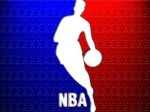Embiid ha a broken foot now?
+2
Sam
kdp59
6 posters
Page 1 of 1
 Embiid ha a broken foot now?
Embiid ha a broken foot now?
http://sports.yahoo.com/news/sources--joel-embiid-awaiting-final-analysis-on-a-possible-fractured-right-foot-180140657.html
maybe Ainge may want to look at moving up a couple spots.
maybe Ainge may want to look at moving up a couple spots.

kdp59- Posts : 5709
Join date : 2014-01-05
Age : 65
 Re: Embiid ha a broken foot now?
Re: Embiid ha a broken foot now?
might be Sam ........... Sam Oden
LOL...no offense......I meant as in Sam Bowie......it never registered until I saw the post.
LOL...no offense......I meant as in Sam Bowie......it never registered until I saw the post.

kdp59- Posts : 5709
Join date : 2014-01-05
Age : 65
 Re: Embiid ha a broken foot now?
Re: Embiid ha a broken foot now?
The Embiid injury is really going to make teams think if they want to pick him.
Luke Winn @lukewinn 4 minutes ago
Embiid's injury is bad: stress fracture to navicular in R foot (Yao bone). Still think he'll go in 4-8 range, then get iced 'til 2015-16.
Read more: http://hoopshype.com/twitter/media.html#ixzz357PNj0xi
Luke Winn @lukewinn 4 minutes ago
Embiid's injury is bad: stress fracture to navicular in R foot (Yao bone). Still think he'll go in 4-8 range, then get iced 'til 2015-16.
Read more: http://hoopshype.com/twitter/media.html#ixzz357PNj0xi

tjmakz- Posts : 4278
Join date : 2010-05-19
 Re: Embiid ha a broken foot now?
Re: Embiid ha a broken foot now?
This is on his instep. With proper nutrition and therapy - and not too many games played in 2014-15 - he could solidify his bone structure and be a force for years to come. Or he could join the NBA and be ruined by playing too much, having unnecessary surgeries, and rushing/defeating his healing process. Surgery for a stress fracture of the navicular? I can tell already he's on the wrong track. DC E-stim across that bone should be his approach. If I were Danny I'd draft him, then treat him properly.
 Re: Embiid ha a broken foot now?
Re: Embiid ha a broken foot now?
W -
I had read somewhere that what could be disturbing is that Embiid played soccer, not basketball until recently. Because of that, this type of injury didn't manifest itself in him until he accelerated his playing time on the court. The thinking was that could mean this will be a chronic condition with him that simply didn't show itself when he played on a softer surface.
Does that make any sense to you, or is it just BS?
Regards
I had read somewhere that what could be disturbing is that Embiid played soccer, not basketball until recently. Because of that, this type of injury didn't manifest itself in him until he accelerated his playing time on the court. The thinking was that could mean this will be a chronic condition with him that simply didn't show itself when he played on a softer surface.
Does that make any sense to you, or is it just BS?
Regards

NYCelt- Posts : 10794
Join date : 2009-10-12
 Re: Embiid ha a broken foot now?
Re: Embiid ha a broken foot now?
There you go - the risk side of the equation just got amped up, big time.worcester wrote:This is on his instep. With proper nutrition and therapy - and not too many games played in 2014-15 - he could solidify his bone structure and be a force for years to come. Or he could join the NBA and be ruined by playing too much, having unnecessary surgeries, and rushing/defeating his healing process.
Worcester, I'll trust you on the treatment approach, but it's worrisome that they're talking surgery before the draft rather than waiting and letting whoever drafts him participate in that decision.

Outside- Posts : 3019
Join date : 2009-11-05
 Re: Embiid ha a broken foot now?
Re: Embiid ha a broken foot now?
NY Celt ...astute observation that a change in playing surfaces from grass to hardwood may have contributed to Embiid's stress fracture. It must be pretty bad because surgery is not the normal treatment. Conservative treatment for a stress fracture of the navicular bone which in the long run is most successful takes 3 to 9 months. IMHO Doing surgery for a quick fix will compromise his chances for a permanent recovery. I sense that Embiid's advisors are trying to push him into that big contract, future be damned. Can't they just be a little patient?
Here's a write-up about the ailment from a physiotherapist's viewpoint. The dry needling to which they refer is acupuncture. Note that surgery is not on the recommended list.
What is a navicular stress fracture?
A navicular stress fracture is a condition characterized by an incomplete crack in the navicular bone. The navicular is the anatomical name given to one of the bones in the mid-foot. It is located at the top of the arch of the foot (figures 1 & 2).
Relevant Anatomy of a Navicular Stress Fracture
Figure 1 - Relevant Anatomy of a Navicular Stress Fracture
Navicular Anatomy
Figure 2 - Navicular Anatomy (right foot)
A muscle (known as the tibialis posterior) attaches to the navicular bone. When this muscle contracts, a pulling force is exerted on the bone. Furthermore, weight bearing activity places compressive force through the navicular. When these forces are excessive or too repetitive and beyond what the bone can withstand, bony damage can gradually occur. This initially results in a bony stress reaction, however, with continued damage may progress to a navicular stress fracture.
--------------------------------------------------------------------------------
Cause of a navicular stress fracture
A stress fracture of the navicular typically occurs over time with excessive weight bearing activity such as running, sprinting, jumping or dancing. They often occur following a recent increase in activity or change in training conditions (such as surface, footwear or technique changes etc).
--------------------------------------------------------------------------------
Signs and symptoms of a navicular stress fracture
Patients with this condition typically experience a poorly localized pain in the inner arch of the foot or ankle that increases with impact activity (such as running, jumping, sprinting and hopping) and decreases with rest. As symptoms worsen, the patient may limp during weight bearing activity and may have to stop activity due to pain.Occasionally, pain may radiate to the outer aspect of the foot, the second and third toes or the inner aspect of the heel bone. In severe cases, walking or standing may be enough to aggravate symptoms. Other symptoms may include night ache or pain on firmly touching the navicular bone.
--------------------------------------------------------------------------------
Diagnosis of a navicular stress fracture
A thorough subjective and objective examination from a physiotherapist may be sufficient to diagnose a navicular stress fracture. Further investigations such as an X-ray, MRI, CT scan or bone scan are usually required to confirm diagnosis and determine the severity of injury.
--------------------------------------------------------------------------------
Prognosis of a navicular stress fracture
With appropriate physiotherapy management, most patients with a stress fracture of the navicular can make a full recovery (return to sport or full activities) in a period of 3 - 9 months. In more severe cases, recovery may take 1 year, or longer, depending on the intervention required and a range of other factors. In rare cases, some patients may experience ongoing symptoms or complications which may require further management.
--------------------------------------------------------------------------------
Treatment for a navicular stress fracture
For detailed information on the treatment of this condition Become a Member.
Already a Member?
View the complete article - Navicular Stress Fracture (Members Only).
--------------------------------------------------------------------------------
Contributing factors to the development of a navicular stress fracture
There are several factors which may contribute to the development of this condition. These need to be assessed and corrected with direction from the treating physiotherapist. Some of these factors include:
inappropriate or excessive training or activity (particularly on hard or uneven surfaces)
inadequate recovery periods from training or activity
poor foot posture (especially flat feet or high arches)
poor biomechanics
muscle weakness (particularly of the gluteals, quadriceps, calf and core stabilisers)
muscle fatigue
poor balance
poor flexibility (particularly of the calf muscles)
joint stiffness (particularly of the ankle, heel or foot)
inappropriate footwear
poor running technique
inadequate diet
leg length discrepancies
being overweight
menstrual disturbances
--------------------------------------------------------------------------------
Physiotherapy for a navicular stress fracture
Physiotherapy treatment for patients with this condition is vital in to hasten healing, prevent injury recurrence and ensure an optimal outcome. Treatment may comprise:
soft tissue massage
joint mobilization
joint manipulation
electrotherapy
dry needling
the use of crutches
the use of a protective boot or brace
activity modification advice
arch support taping
biomechanical correction (e.g. the use of orthotics)
technique correction
footwear advice
exercises to improve strength, balance, flexibility and core stability
education
a gradual return to running / activity plan
Here's a write-up about the ailment from a physiotherapist's viewpoint. The dry needling to which they refer is acupuncture. Note that surgery is not on the recommended list.
What is a navicular stress fracture?
A navicular stress fracture is a condition characterized by an incomplete crack in the navicular bone. The navicular is the anatomical name given to one of the bones in the mid-foot. It is located at the top of the arch of the foot (figures 1 & 2).
Relevant Anatomy of a Navicular Stress Fracture
Figure 1 - Relevant Anatomy of a Navicular Stress Fracture
Navicular Anatomy
Figure 2 - Navicular Anatomy (right foot)
A muscle (known as the tibialis posterior) attaches to the navicular bone. When this muscle contracts, a pulling force is exerted on the bone. Furthermore, weight bearing activity places compressive force through the navicular. When these forces are excessive or too repetitive and beyond what the bone can withstand, bony damage can gradually occur. This initially results in a bony stress reaction, however, with continued damage may progress to a navicular stress fracture.
--------------------------------------------------------------------------------
Cause of a navicular stress fracture
A stress fracture of the navicular typically occurs over time with excessive weight bearing activity such as running, sprinting, jumping or dancing. They often occur following a recent increase in activity or change in training conditions (such as surface, footwear or technique changes etc).
--------------------------------------------------------------------------------
Signs and symptoms of a navicular stress fracture
Patients with this condition typically experience a poorly localized pain in the inner arch of the foot or ankle that increases with impact activity (such as running, jumping, sprinting and hopping) and decreases with rest. As symptoms worsen, the patient may limp during weight bearing activity and may have to stop activity due to pain.Occasionally, pain may radiate to the outer aspect of the foot, the second and third toes or the inner aspect of the heel bone. In severe cases, walking or standing may be enough to aggravate symptoms. Other symptoms may include night ache or pain on firmly touching the navicular bone.
--------------------------------------------------------------------------------
Diagnosis of a navicular stress fracture
A thorough subjective and objective examination from a physiotherapist may be sufficient to diagnose a navicular stress fracture. Further investigations such as an X-ray, MRI, CT scan or bone scan are usually required to confirm diagnosis and determine the severity of injury.
--------------------------------------------------------------------------------
Prognosis of a navicular stress fracture
With appropriate physiotherapy management, most patients with a stress fracture of the navicular can make a full recovery (return to sport or full activities) in a period of 3 - 9 months. In more severe cases, recovery may take 1 year, or longer, depending on the intervention required and a range of other factors. In rare cases, some patients may experience ongoing symptoms or complications which may require further management.
--------------------------------------------------------------------------------
Treatment for a navicular stress fracture
For detailed information on the treatment of this condition Become a Member.
Already a Member?
View the complete article - Navicular Stress Fracture (Members Only).
--------------------------------------------------------------------------------
Contributing factors to the development of a navicular stress fracture
There are several factors which may contribute to the development of this condition. These need to be assessed and corrected with direction from the treating physiotherapist. Some of these factors include:
inappropriate or excessive training or activity (particularly on hard or uneven surfaces)
inadequate recovery periods from training or activity
poor foot posture (especially flat feet or high arches)
poor biomechanics
muscle weakness (particularly of the gluteals, quadriceps, calf and core stabilisers)
muscle fatigue
poor balance
poor flexibility (particularly of the calf muscles)
joint stiffness (particularly of the ankle, heel or foot)
inappropriate footwear
poor running technique
inadequate diet
leg length discrepancies
being overweight
menstrual disturbances
--------------------------------------------------------------------------------
Physiotherapy for a navicular stress fracture
Physiotherapy treatment for patients with this condition is vital in to hasten healing, prevent injury recurrence and ensure an optimal outcome. Treatment may comprise:
soft tissue massage
joint mobilization
joint manipulation
electrotherapy
dry needling
the use of crutches
the use of a protective boot or brace
activity modification advice
arch support taping
biomechanical correction (e.g. the use of orthotics)
technique correction
footwear advice
exercises to improve strength, balance, flexibility and core stability
education
a gradual return to running / activity plan
 Re: Embiid ha a broken foot now?
Re: Embiid ha a broken foot now?
So, W, based on the admittedly sketchy information that has leaked out, would you take a chance on Embiid @ #6? (I know there's a poll to this effect on another thread, but I can't resist asking the question here.)
Thanks,
Sam
Thanks,
Sam
 Re: Embiid ha a broken foot now?
Re: Embiid ha a broken foot now?
Sam, Considering that the best doctors in America are in Boston, that Danny tends to take a long view of player development, that he would probably follow doctors orders, and that he would let Embiid sit the 3-9 months needed for him to recover properly, then yes, I'd draft him at # 6. But if Danny plans to rush him into action (doubtful) then NO.
 Re: Embiid ha a broken foot now?
Re: Embiid ha a broken foot now?
W, written like a true cross between a physician and a mediator.
Thanks for the response.
Sam
Thanks for the response.
Sam
 Similar topics
Similar topics» Pierce does NOT have a broken foot
» PAUL PIERCE HAS A BROKEN FOOT?!
» Brook Lopez suffers broken foot, out for the season
» Report: Joel Embiid’s right foot isn’t insured by the Sixers
» Report: Celtics Still Interested In Drafting Embiid Despite Foot Injury
» PAUL PIERCE HAS A BROKEN FOOT?!
» Brook Lopez suffers broken foot, out for the season
» Report: Joel Embiid’s right foot isn’t insured by the Sixers
» Report: Celtics Still Interested In Drafting Embiid Despite Foot Injury
Page 1 of 1
Permissions in this forum:
You cannot reply to topics in this forum